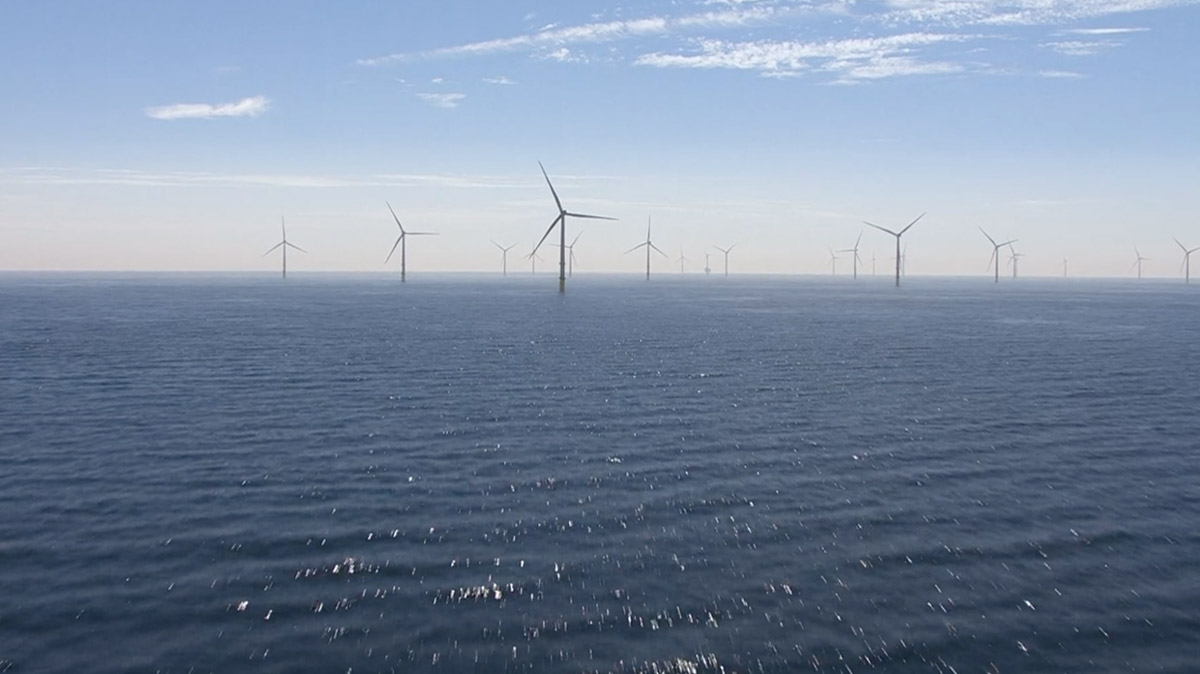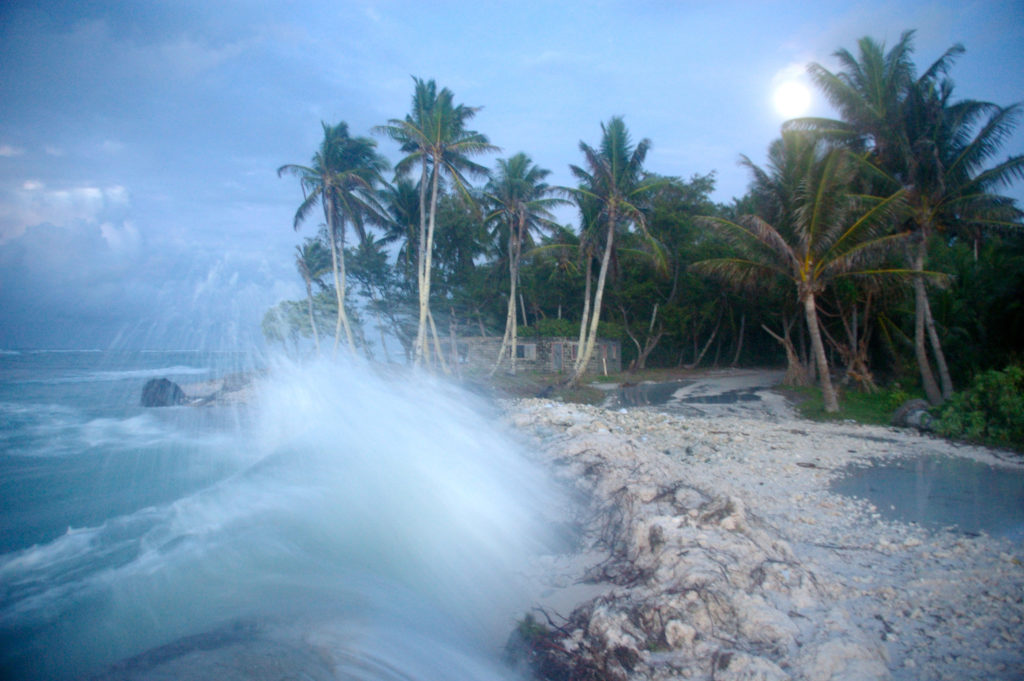Key Points:
- Australia could be a global offshore wind superpower
- If all the current proposed offshore wind farms were built, their combined energy capacity would be greater than all of Australia’s coal-fired power stations.
- The greatest economic and employment opportunities for this industry are in Australia’s regions.
- A number of Australia’s trading partners and strategic allies have set ambitious targets for offshore wind.
What is offshore wind and what’s in it for Australia?
Offshore wind power is the energy taken from the force of winds out at sea, captured by wind turbines, and supplied into the electricity grid via an undersea cable to power homes and businesses. Like onshore wind and solar, it’s a form of renewable energy, and can provide clean, reliable and more affordable power.
There’s huge potential for this industry in Australia as our wind resources are among the world’s best, up there with the North Sea between Britain and Europe (the world’s leading offshore wind region). In fact, there is enough wind potential just off our shores to power our entire electricity grid several times over. If all the offshore wind farms being proposed are built, they would collectively be capable of producing more energy than all of Australia’s remaining and ageing coal-fired power stations.
If we embrace this clean energy industry and start building large projects in the next few years, it would mean 8,000 new jobs each year for Australian workers from 2030. Many of the jobs and economic opportunities would be created in regional areas like the Hunter Valley, Illawarra, Gladstone, Port Kembla, Newcastle, and Latrobe Valley that already have major energy infrastructure and a skilled workforce. Around 70% of traditional power generation sector workers and 90% of maritime industry workers already have core skills needed to work in offshore wind, and can switch to jobs in offshore wind with minimal training.
Offshore wind would also provide more affordable energy for existing manufacturing. The industry would also attract plenty of private investment in related industries such as renewable hydrogen and local wind turbine manufacturing.
Unfortunately, we are lagging behind the rest of the world when it comes to offshore wind.
What is the rest of the world doing?
The International Energy Agency (IEA) has identified offshore wind energy as one of the “big three” solutions in electricity to our climate woes – alongside on-shore wind and solar. A number of Australia’s trading partners and strategic allies have set high targets for offshore wind generation, including the United Kingdom (UK), United States (US), the European Union, South Korea, and Japan. In 2020, China was responsible for building half of the world’s new offshore wind capacity.
IN THE US
Under the Biden administration, the US has set an ambitious goal of building a massive 30 gigawatts of offshore wind by 2030, enough to power 10 million homes in the US, create around 33,000 jobs and avoid 78 million tonnes of greenhouse gas emissions.
IN THE UK
The UK is the world leader in offshore wind, with more installed capacity than any other country. Over there offshore wind powers the equivalent of 4.5 million homes annually or more than a quarter of the UK’s electricity needs. The cost of new offshore wind has fallen by 50% since 2015 and it is now one of the lowest cost options for new power in the UK – cheaper than gas and nuclear power. Between 2016 and 2021 nearly more than $AU35 billion) has been invested into the industry and it supports thousands of workers across the UK in manufacturing, project development, construction, and operations. The UK wants to power all of its homes with offshore wind energy by 2030
IN EUROPE
Earlier this year France, Belgium, the Netherlands, Ireland, Denmark, Germany, the UK, Norway and Luxembourg agreed to increase their combined North Sea offshore wind capacity to create “Europe’s biggest green power plant”. This doubles previous goals made in May 2022 and will reduce the EU’s reliance on Russian gas.
The International Energy Agency projects that offshore wind will grow to a trillion dollar business globally over the coming decades.
The environmental impact
Building offshore wind is leaps and bounds better for ocean wildlife than polluting fossil fuels, especially offshore gas and oil.
Scientists across the board agree that the biggest threat to whales and our oceans is climate change that’s fuelled by the burning of coal, oil and gas.
There are lots of false claims about offshore wind circulating online. Scientists have confirmed that there is no evidence to link whale stranding to offshore wind energy development. There have been numerous studies into the effects of offshore wind farms on whales and marine mammals, and no peer-reviewed study has found any evidence that offshore wind farms kill whales. In contrast, there is scientific consensus that pollution is overheating our planet and is endangers all of us, and all animal life including whales.
Seismic blasting:
There’s a world of difference between the seismic blasting for oil and gas, and sonar mapping for offshore wind. Oil and gas surveys are much louder and can deafen and kill whales because they have to penetrate kilometres into the earth to locate oil and gas reserves. Offshore wind surveys are much, much quieter, because they’re just mapping the sea bed. The effects on animals are generally short lived, and much less harmful. It’s the difference between having smooth jazz on in the background, and being front row at a metal concert.
Check out Yale University’s write up here.
What projects are on the horizon for Australia?
The Australian Government is currently assessing 6 high priority areas around Australia with the potential to produce the renewable energy needed to support Australia becoming a clean energy superpower.
The federal Government began public consultations for the Bass Straight region in October 2023. It is expected to begin consultations for the Perth/Bunbury zone shortly. This is the last of a series of consultations the Government has been running about establishing an offshore wind energy industry in Australia.
The company behind the biggest offshore wind project in the Bass Strait, Star of the South, has proposed an almost 500-square-kilometre patch that would host up to 200 turbines located at least 10km off the south coast of Gippsland. Late in 2022, Gippsland was declared Australia’s first offshore wind zone.
Like with any development, proper consideration needs to be given to the location of offshore wind projects. This needs to be done in close consultation with local communities, with any environmental impact minimised. Genuine consultation is essential, and sharing the ongoing benefit of such development with local communities is best practice.
“I find myself in an interesting place working in a coal-fired power station while advocating for renewable energy, like solar and wind. But the transition to clean energy is inevitable
– Tony Wolfe, Latrobe Valley coal worker and a member of the community advisory board for the Star of the South
Renewable energy – like offshore wind – is Australia’s golden ticket to a reliable, affordable, and clean energy future. Investing in the offshore wind industry is a no-brainer, but we need to do it in the right way.










